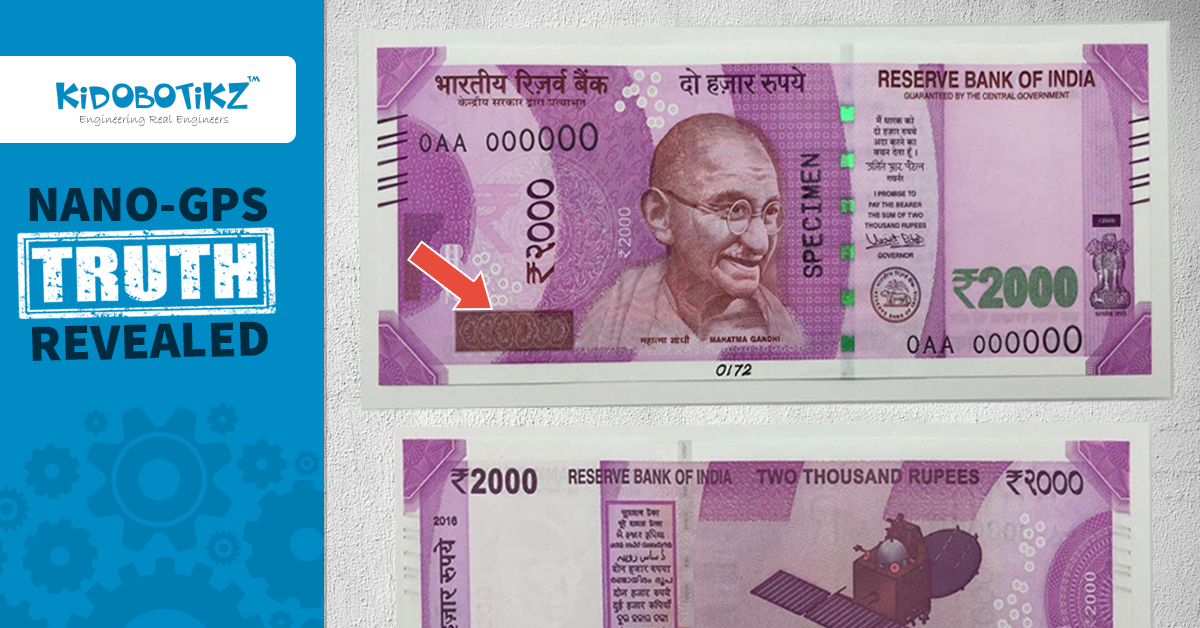


Ever since the news of invalidation of the Rs.500 and Rs.1000 notes broke out, the nation has been abuzz about it all along. If social media trends are any indication of the conversation happening AFK, the whole nation has been voluble about this news. Until the wee hours of wednesday morning, long queues were noticed across the nation at ATMs, Petrol Bunks and even Pharmacies. Citizens were quite eager to just get rid of the two notes and get the ubiquitous 100 rupee note in return.
Amidst all this there was quite another conversation that was doing rounds on the microblogging and internet messaging platforms. Netizens were sharing what appeared to be the blueprints of new 2000 rupee note. While all this was quite understandable and conforming to what can be expected after a ground shaking news breaks out, what was also interesting is that these unverified reports carried the news of a “Nano GPS tracker chip” embedded into the Rs.2000 note.
While this news has remained unverified and the internet remains rife with speculation, we decided to take the news with a pinch of salt and give it a thorough treatment from the tech angle.
Can such a technology be embedded into currency notes? Is there a precedent?
There is no clear answer in this regard. For one thing, no nation has ever embedded GPS chips onboard their currency notes. The simple math surrounding such an endeavour is quite mind boggling as the cheapest of GPS tracking chips are still quite expensive. They could cost upwards of 200 rupees. More importantly, across the global market (and China ofcourse), there aren’t Nano-GPS chips available that are thin enough to be embedded into the fabric of a currency note.
So, unless the good guys at the RBI’s Nashik Note press came up with a pathbreaking technology, it is highly unlikely that this news is true.
However, can such a concept or any similar technology be incorporated in the future, if not now?
The answer for this is a lot promising than was expected. For decades, scientists have been working on tracking devices which are small enough to be embedded into objects of regular use.
Some of the technologies that have been developed in this regard could actually give us a glimpse into how the future could look like:
Smart Dust is a system of tiny micro sized sensors knowns as Micro Electro Mechanical Systems (MEMS) that can detect light, temperature, vibration, magnetism etc. Usually operated wirelessly over a computer network, these can be embedded and distributed over an area to perform tasks such as sensing. Measuring the size of a few millimeters, these could actually be embedded into the fabric of a currency note and used for tracking its circulation through a system. Although promising, the technology is still in a stage where it cannot be scaled to size of an entire nation’s currency system.
 "Smart Dust" motes promise to be very small to enable their usage on a variety of devices.
"Smart Dust" motes promise to be very small to enable their usage on a variety of devices. With self powering sources and connectivity to networks, Smart dust can actually be a part of IoT framework
With self powering sources and connectivity to networks, Smart dust can actually be a part of IoT frameworkThis is yet another technology that has been used in several use cases ranging from automobiles to logistics. This is a technology which uses small RFID (Radio Frequency Identification) tags to identify and track the movement of products or goods. It has been used to a surprising effect in a wide range of industries from animal husbandry to automobile manufacture. It’s miniaturization prospects mean that it could be embedded on currency notes in the future and be tracked. However, it can only be tracked over a range of few 10s of meters. This would be a constraint when tracking currency through an economy, particularly the kind of satellite tracking that was discussed on social media. However, future holds great prospects for this technology when it comes to tracking currency notes.
 RFID tags are curently used across a lot industries such as automobile, logistics etc..
RFID tags are curently used across a lot industries such as automobile, logistics etc..
 The small size of RFID tags mean that they can be possibly imprinted to the fabric of currency notes
The small size of RFID tags mean that they can be possibly imprinted to the fabric of currency notes
So, if “Achhe Din” is the trend moving forward, maybe borrowing such “Achhe” concepts will help eradicating the evil that is counterfeit currency and black money. In the process, the nation could also embrace the technologies of the future.
